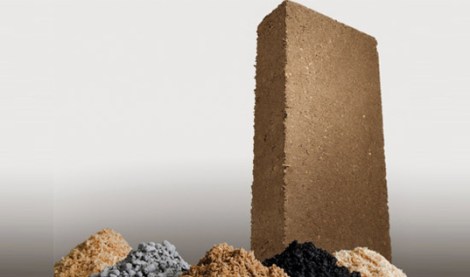The Carbon Buster is a slab of brown amalgamate — carbon dioxide, sand, cement, water, glass, shells, wood shavings. This is not that different from any other concrete block you use to build buildings. What makes it special, according to the company that made it, is where all that sand and cement and glass and wood came from.
More than 50 percent of the material that goes into the Carbon Buster is recycled. One ingredient begins as residue from waste-to-energy plants. The residue is mixed with carbon dioxide and other ingredients to make small pebbles. Those are then mixed with even more recycled materials and made into something that looks more or less like a brick.
The company says the Carbon Buster is the first “carbon negative” building block — it contains more carbon than its manufacture emits. That’s what happens when you reuse materials that are already in the production system — you might have to process them a little bit, but that takes less energy than it does to mine virgin materials from the ground. Which means that as long as you avoid adding glass, metal, drywall, insulation, or humans, you could have a completely carbon-neutral building!




